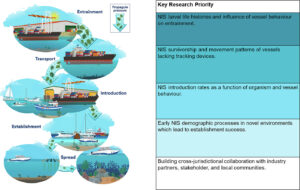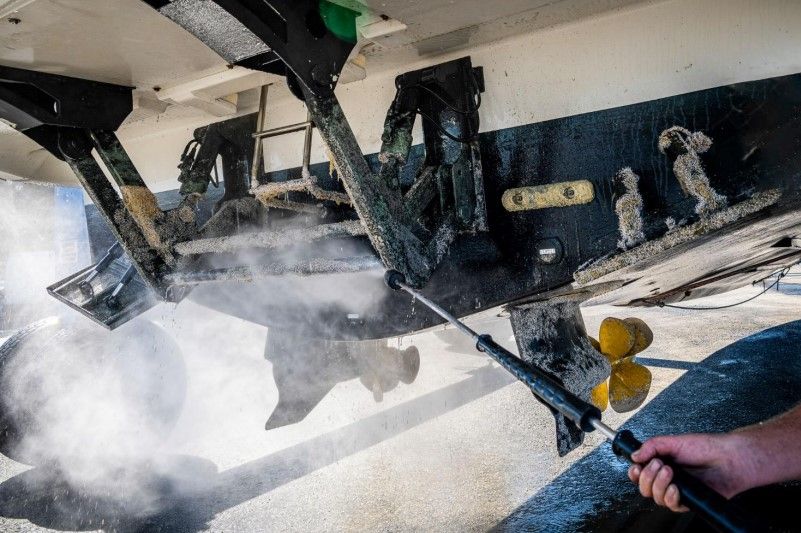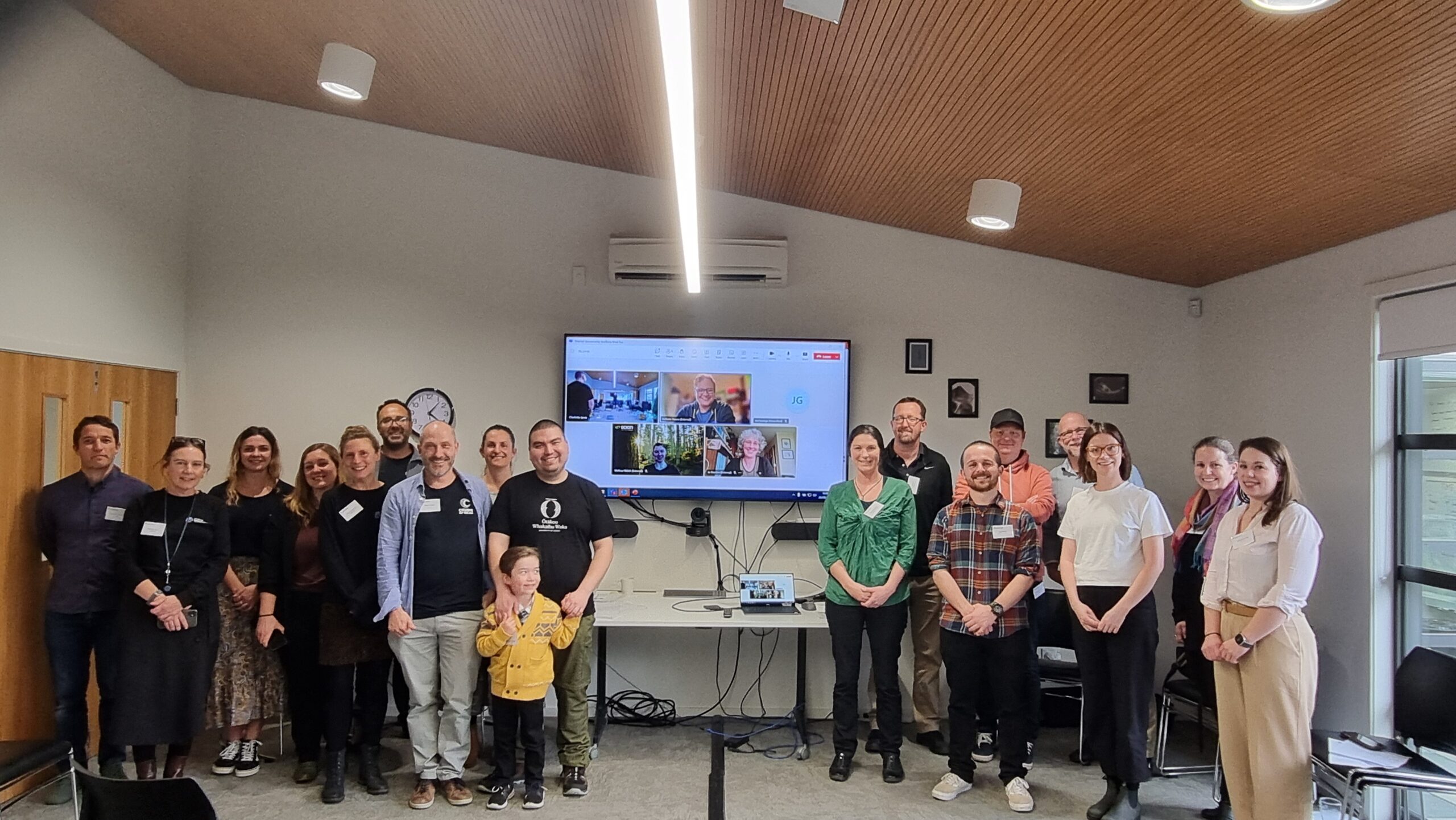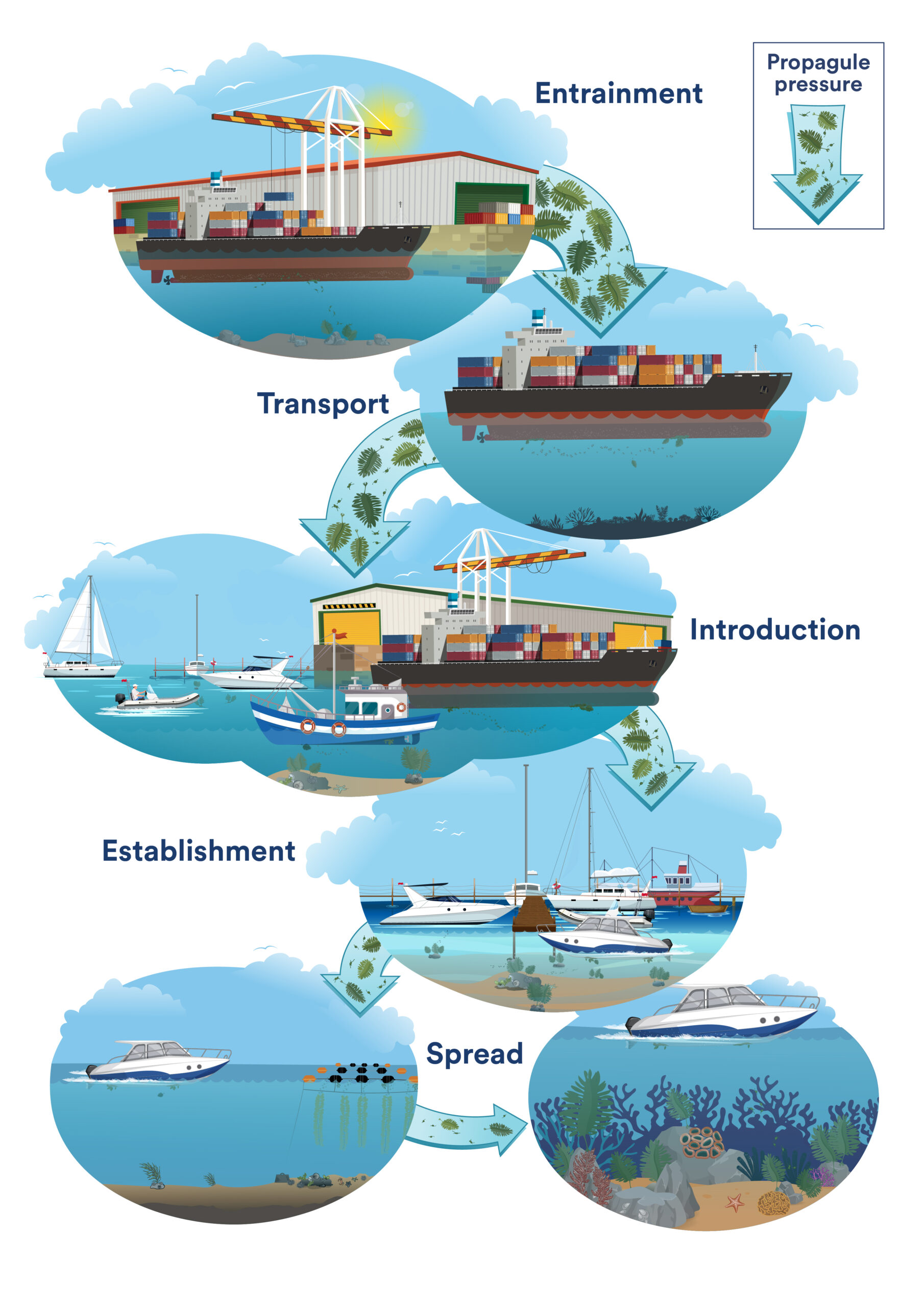Last year over 700 boat owners who have non-trailered boats moored in marinas around Aotearoa…
Priorities for improving predictions of vessel-mediated marine invasions
The first thesis chapter of our PhD student in the Manage&Respond team of the Marine Biosecurity Toolbox programme, Kyle Hilliam, has just been published in Science of the Total Environment (STOTEN). In the paper, all of the biological, vessel and environmental factors influencing the progress of a species through the invasion process were identified. Based on this, research gaps were identified to improve our ability to predict marine invasions via vessels. The main four research priorities are (1) rates of entrainment (uptake) of marine invasives by vessels; (2) the movement patterns of vessel types lacking maritime location devices; (3) understanding how vessel release (introduce) marine invasive species concerning vessel behaviour; and (4) the influence of a species’ biology/reproduction on establishment success for various incursions sizes.

Info-graphic on propagule pressure: The five stages of the invasion process which non-indigenous species must sequentially undertake to be successful include: entrainment; transport; introduction; establishment and spread. The diminishing relative propagule pressure passing through each of the five stages is shown by decreasing arrow sizes.
The study was published March 2024 in Science of the Total Environment (STOTEN), read the whole publication here!




Comments (0)